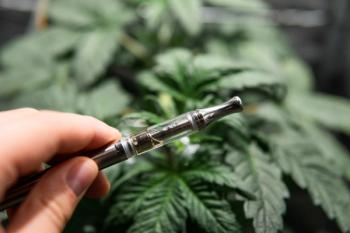
Cannabis Science and Technology
- May/June 2025
- Volume 8
- Issue 3
- Pages: 6-8
Optimizing Vapor Cartridge Hardware Selection for Different Cannabis Extracts, Part II: Key Considerations for Performance and Safety

The second half of this two-part series focuses on recent vape hardware innovation, as well as best practices in disposable vape pens and 510 cartridges that improve the user experience, preserve extract quality, and mitigate clogging, leaking, and degradation.
The compatibility of vapor cartridge hardware with cannabis extract formulations plays a critical role in ensuring optimal performance, flavor retention, and consumer safety. Different extract types—such as distillates, live resins/rosins, and full-spectrum oils—exhibit varying viscosities, terpene profiles, and chemical compositions that influence the optimal configuration of vape hardware. The second half of this two-part series focuses on recent vape hardware innovation, as well as best practices in disposable vape pens and 510 cartridges that improve the user experience, preserve extract quality, and mitigate clogging, leaking, and degradation. The column also considers battery life and oil chamber materials.
Introduction
In Part I of this series, we explored fundamental performance factors for vapor cartridge hardware, including extract types, heating elements, coil types, atomizer resistance, aperture size, and temperature control. These parameters set the stage for understanding how to match hardware with the physical and chemical characteristics of different cannabis extracts. In Part II, we turn our attention to recent hardware innovations and best practices in disposable vape pens and 510 cartridges that further refine user experience, preserve extract quality, and mitigate issues such as clogging, leaking, and degradation. We also consider aesthetics, battery life, and the evolving standards for oil chamber materials—all of which are becoming increasingly important for both manufacturers and consumers.
Evolving Hardware Designs: Beyond the Basics
Innovations in Disposable Vape and 510 Cartridge Hardware
As consumer preferences diversify and extract formulations become more nuanced, vape hardware manufacturers have responded with advanced engineering. Disposables are no longer simple one-and-done units; instead, they carry features like pre-heating functions, adjustable airflow, haptic feedback, and USB-C charging ports.
For 510 cartridges, improvements include ceramic-core atomizers with anti-burn technology, vertical oil pathways to enhance wicking, and pressure-equalizing designs to reduce vacuum lock. The goal in both formats is the same: better terpene expression, fewer clogs, and a smoother, more flavorful draw.
One notable trend is the migration toward hybrid systems, where disposable vapes or pods feature the modular flexibility of 510 threading but with proprietary internal components optimized for specific extract types. These systems allow producers to fine-tune each element—resistance, aperture, and heating pattern—to match a high-terpene live resin or a thicker rosin.
Preventing Clogging and Leaking
Why Clogs and Leaks Happen
Clogging and leaking are perhaps the most common—and most frustrating—issues faced by vape users. These problems usually arise due to mismatches between oil viscosity and hardware design, inconsistent temperature control, or poor-quality seals and gaskets.
Clogs occur when cooled vapor condenses inside the airway, forming a sticky residue that accumulates over time. This is especially common with high viscosity extracts as the vapor condenses to a very thick viscosity that is hard for air to penetrate without heat. Leaks, on the other hand, often result from oversized apertures for low viscosity oils, inadequate seals or oversaturation of the wick or mesh.
Design Solutions
- Improved Airflow Engineering: Modern cartridges use tapered airways, internal anti-condensation layers, and smart airflow routing to minimize clog accumulation.
- Temperature Preheat and Pulse Heating: Preheating cycles, either automatic or user-activated, can liquefy settled residue without overheating the oil, helping maintain flow.
- One-Way Valve Systems: These are increasingly built into high-end cartridges and disposables to prevent oil backflow and vapor recondensation.
- Thermal Isolation: Designs that separate the heating core from the mouthpiece help prevent heat transfer that might cause oil to migrate or oxidize in the wrong places.
For consumers, regular use and proper storage (upright, at room temperature) also go a long way in preventing these issues.
Oil Chamber Materials: Safety Meets Flavor
Historically, vape cartridges used plastic or metal materials in their oil chambers, but both come with risks. Plastics can leach over time especially under heat, and metals may contain heavy metals or other contaminants.
Modern Material Standards
- Borosilicate Glass: Offers excellent chemical resistance, thermal stability, and flavor neutrality. It has become the gold standard for premium cartridges.
- Ceramic Chambers: Often used in conjunction with ceramic coils, these chambers provide even heating and zero risk of chemical leaching.
As consumers become more discerning, full material disclosures and third-party safety certifications are becoming an industry expectation.
Aesthetic and Ergonomic Considerations
While performance and safety are paramount, the visual and tactile experience of a vape pen has become increasingly important in brand differentiation. Whether for a luxury product or an approachable daily use vape, industrial design matters.
Design Trends Shaping the Market
- Soft-Touch Finishes and Ergonomic Shapes: Rounded edges, silicone-wrapped bodies, and grip-friendly forms enhance the physical feel and signal premium craftsmanship.
- Custom Branding Options: White-label hardware has evolved to support custom finishes, embossed logos, and bespoke form factors.
- Transparent Chambers and Light Indicators/Screens: Users appreciate seeing the oil level clearly, and LED indicators that communicate battery status or temperature mode are increasingly common.
- Color Psychology and Target Markets: Brands are now using color schemes to appeal to specific customer segments such as earthy tones for wellness-focused consumers and bold neons for recreational use, for example.
This focus on aesthetics complements performance, creating a more intuitive and enjoyable overall experience.
Power Management and Battery Integration
In both cartridges and disposables, the battery is more than just a power source—it’s a key component in flavor preservation and vapor consistency.
Battery Innovations
- Variable Voltage Settings: Allowing users to fine-tune vapor density and temperature output based on the oil’s properties.
- Smart Batteries: Some devices now feature puff counters, draw-activated power modulation, and even Bluetooth connectivity to monitor usage.
- USB-C and Fast Charging: Rechargeable disposables now last longer and charge more quickly, reducing waste and increasing convenience.
- High-Drain Lithium Cells: Better cell chemistry improves the consistency of power delivery, reducing the chance of underpowered hits that can cause clogging or oil degradation.
From a compliance and sustainability perspective, long-life rechargeable disposables also help reduce e-waste and improve the overall lifecycle impact of vaping devices.
Conclusion: A Holistic View of Vape Hardware Design
As the cannabis vape market continues to mature, the focus is shifting from simple compatibility to synergistic optimization. It’s no longer just about choosing the right aperture or coil resistance—it’s about selecting a suite of interdependent features that work together to elevate the entire vaping experience. Innovations in form factor, power management, material safety, and visual design are reshaping consumer expectations and pushing manufacturers to deliver smarter, safer, and more enjoyable products.
Ultimately, whether working with a delicate live rosin or a stable distillate, success depends on understanding not just the chemistry of the oil, but the engineering of the hardware it’s paired with. By paying attention to the full range of variables covered in both parts of this series, extractors, manufacturers, and consumers alike can contribute to a better, safer,
and more consistent cannabis vaporization future.
About the Columnist
Lo Friesen is the founder, CEO, and Chief Extractor of Heylo. With a background in chemistry and clinical research, Lo was inspired to explore cannabis as a medicine and to enter the emerging industry. She joined Eden Labs, a leading CO2 extraction equipment manufacturer to support and expand a Research and Development department. There she managed the development of their latest and greatest CO2 extraction system. In 2017, after working with Eden Labs and another cannabis processor, Lo launched Heylo with a mission to help people get more out of life with cannabis.
How to Cite this Article
Friesen, L., Optimizing Vapor Cartridge Hardware Selection for Different Cannabis Extracts, Part II: Key Considerations for Performance and Safety, Cannabis Science and Technology, 2025, 8(3), 6-8.
Articles in this issue
Newsletter
Unlock the latest breakthroughs in cannabis science—subscribe now to get expert insights, research, and industry updates delivered to your inbox.





